Learn how the Persian kings from Cyrus to Darius II shaped biblical history, uncovering a fascinating intersection of faith and ancient politics.
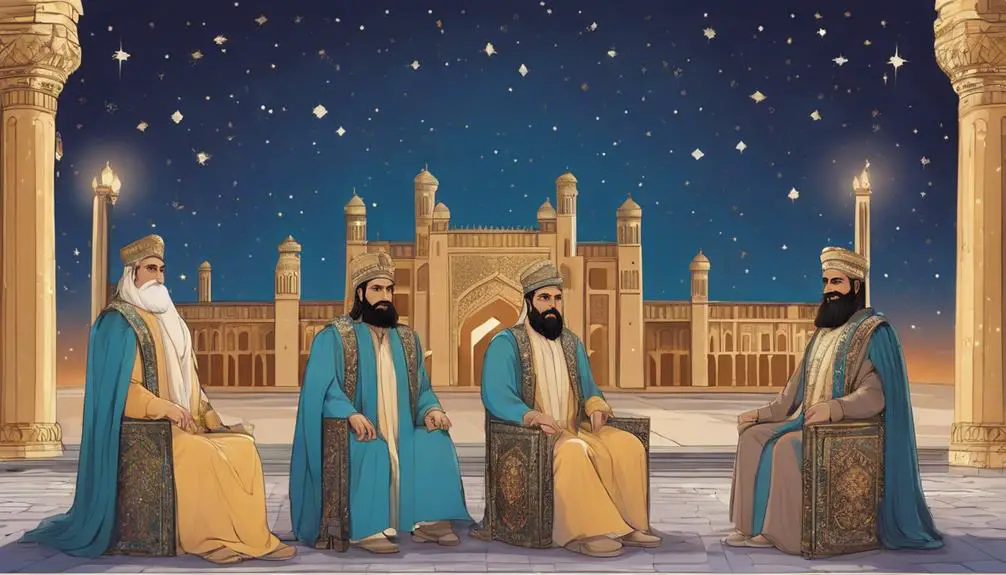
Kings of Persia in the Bible
Imagine flipping through your history app and stumbling upon the kings of Persia, not just as ancient rulers, but as pivotal figures in the Bible. You've probably heard of Cyrus the Great, who's famous for his edict allowing the Jews to return to Jerusalem, but that's just the tip of the iceberg.
From Cambyses II's less known reign to Darius I's connection with biblical prophecy, and Xerxes I's role in Esther's dramatic story, there's a rich tapestry of narratives that intertwine these Persian kings with biblical history.
What's more intriguing is how Artaxerxes I's decrees and Darius II's historical context further weave into this complex relationship. As you explore these connections, you'll uncover layers of history that might change how you view the ancient world and its influence on religious texts.
Key Takeaways
- Persian kings facilitated the fulfillment of biblical prophecies through their policies and actions.
- Cyrus the Great's edict directly supported the rebuilding of the Jerusalem Temple.
- Darius I's reign was seen as part of God's plan for His people, intertwining divine will with imperial governance.
- Esther's interaction with Xerxes I highlighted divine providence working through Persian political structures.
Cyrus the Great's Edict
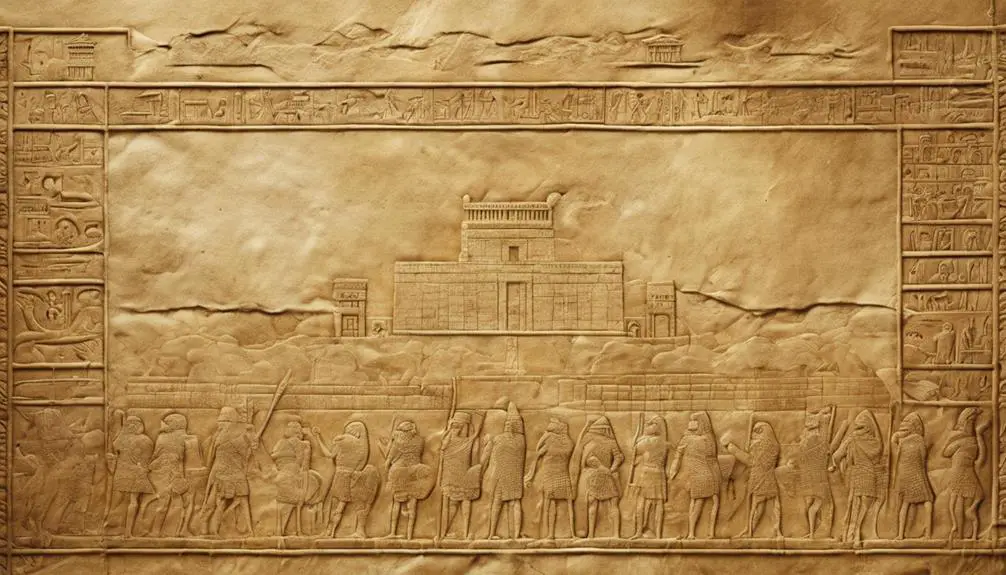
In 538 BCE, Cyrus the Great issued an edict that significantly altered the fate of the Jewish people, marking a pivotal moment in their history. This decree, documented in the Cyrus Cylinder, is a cornerstone in understanding the end of the Babylonian exile. It not only allowed the Jewish exiles to return to their homeland but also authorized the reconstruction of the Jerusalem Temple, symbolizing religious tolerance and political strategy.
You'll find that the implications of this edict extend beyond the immediate restoration of religious and cultural identities. It underscored the Persian Empire's approach to governance, emphasizing respect and autonomy among conquered peoples. This policy, revolutionary for its time, fostered loyalty and stability within the diverse empire.
Analyzing the Cyrus Cylinder further, it's evident that the edict was part of a broader diplomatic and administrative strategy. By allowing exiles to return home and restore their places of worship, Cyrus effectively gained the allegiance of these communities, securing the western borders of his empire. This move wasn't just benevolent; it was a calculated step towards consolidating Persian control and facilitating the integration of varied cultures into the empire's administrative framework.
Cambyses II's Reign
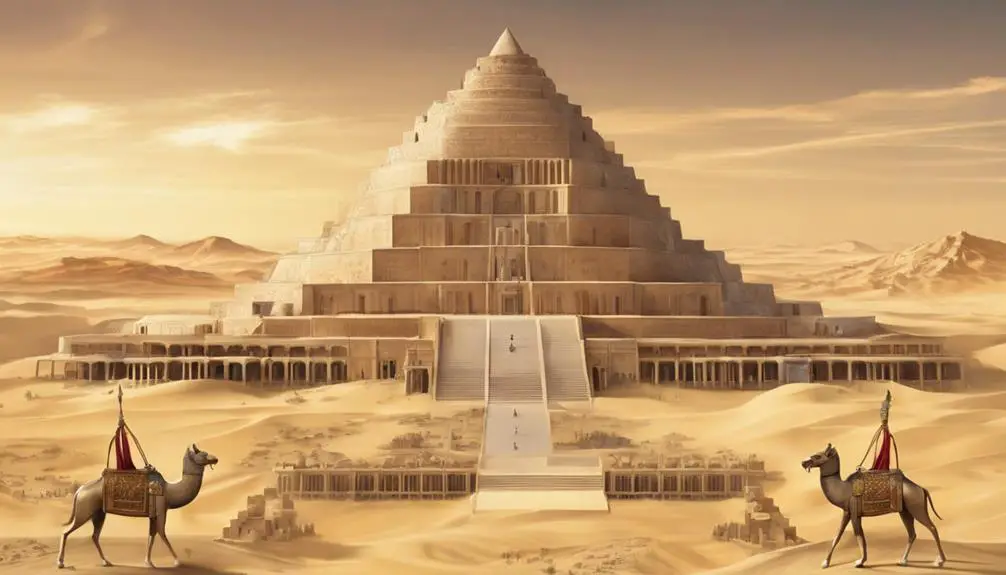
Following Cyrus the Great's era, his son, Cambyses II, ascended the Persian throne, marking a period characterized by ambitious military campaigns and significant administrative challenges. You'll find that Cambyses II's reign, while overshadowed by his father's legacy, brought its own set of accomplishments and controversies.
Cambyses II embarked on military expeditions that expanded the Persian Empire's boundaries, but his methods and the consequences of his actions have been the subject of scrutiny. Here are key aspects of his reign:
- Cambyses' conquests: Notably, he successfully annexed Egypt, extending Persian control and influence into North Africa. This victory was a testament to his military prowess and strategic acumen.
- Administrative reforms: Cambyses II sought to integrate the newly conquered territories into the empire through a series of administrative reforms, aiming for a cohesive governance structure.
- Preservation of his father's legacy: Amidst his conquests and reforms, Cambyses II endeavored to uphold and continue the policies initiated by Cyrus the Great, particularly those regarding religious tolerance and infrastructural development.
Cambyses II's reign, albeit short and tumultuous, was instrumental in consolidating and expanding the Persian Empire, building upon his father's legacy while navigating the complexities of imperial administration and expansion.
Darius I and Biblical Prophecy
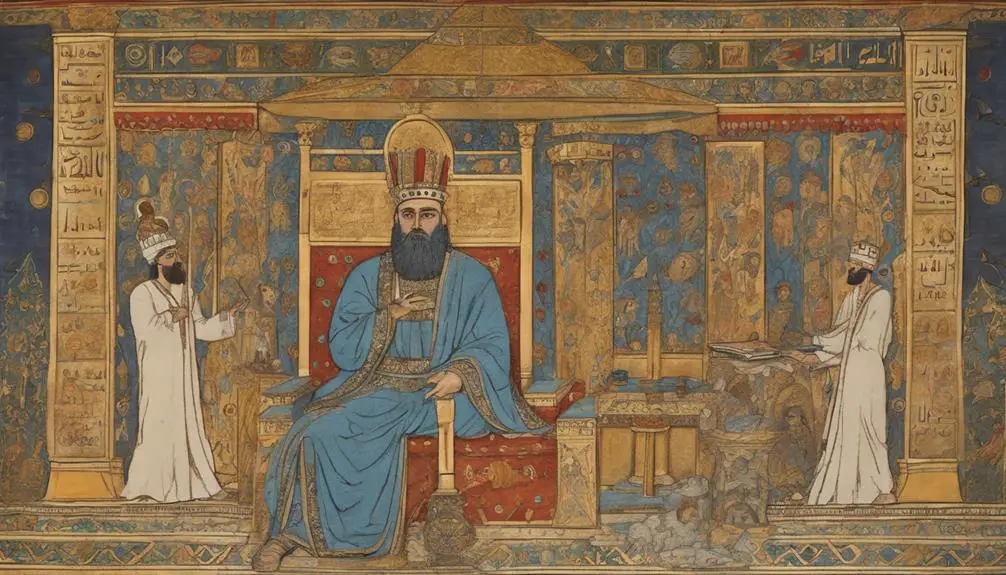
Darius I's reign, through the lens of biblical prophecy, reveals a complex interplay between divine foretelling and human leadership that significantly influenced the course of Persian and biblical history. Central to this narrative is Daniel's vision of the Medo Persian empire, a pivotal moment that underscores the prophetic underpinnings of Darius's rule. Daniel's visions, particularly those involving the ram and the goat, symbolize the rise of the Medo Persian empire under Darius, illustrating the divine orchestration behind the scenes of human history.
This period, marked by Darius's consolidation of the empire, is further illuminated by biblical prophecies that underscore the role of the Medo Persian empire in fulfilling God's plan for His people. The intricacies of these prophecies, combined with Darius's administrative reforms and policies, demonstrate a convergence of divine purpose with human governance. His reign thus becomes a critical juncture in the realization of biblical prophecy, highlighting the sovereignty of divine will amidst the affairs of nations.
Analyzing Darius I's era from this perspective offers deep insights into the dynamics of prophecy, kingship, and the unfolding of historical events, showcasing the intertwined destinies of the Persian empire and the biblical narrative.
Xerxes I in Esther's Story
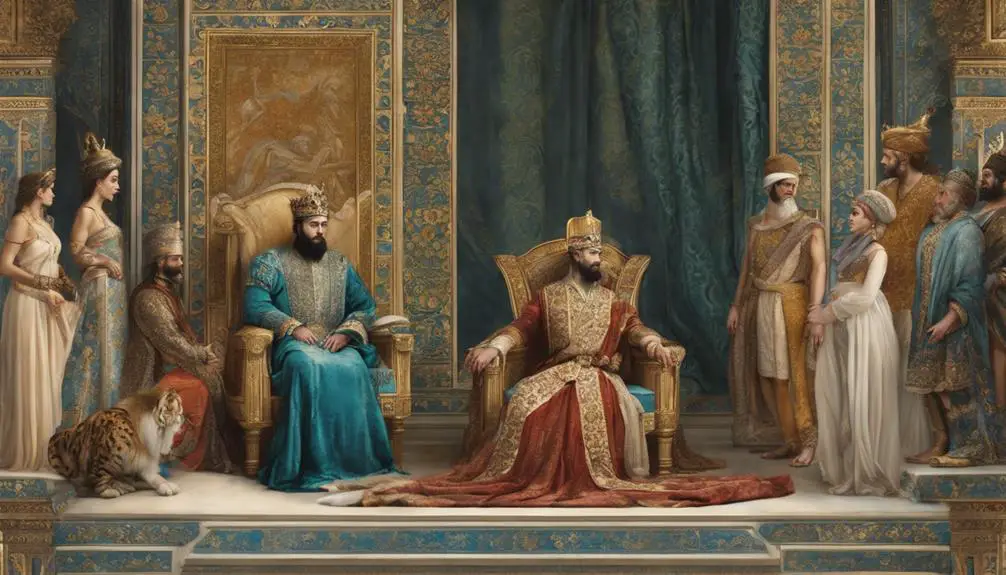
Shifting focus from Darius I's prophetic significance, we now explore the reign of Xerxes I, particularly his role in the biblical narrative of Esther, which showcases another facet of divine interaction with Persian kingship. This story isn't just a tale of intrigue and survival but also a profound exploration of Esther's courage within the complex web of Persian politics.
Xerxes I, often seen as a pivotal figure, finds himself unknowingly at the center of a plot that could have ended the Jewish people. Through Esther's bravery and strategic intervention, a disaster is averted, highlighting the intricate relationship between divine providence and human agency.
- Esther's Courage: Her boldness in approaching Xerxes, despite the potential for personal harm, underscores the theme of courage and faith overriding fear.
- Persian Politics: The story provides insight into the inner workings of the Persian court, illustrating how power, favor, and influence could shift rapidly.
- Divine Interaction: The narrative suggests that divine will operates within and through political structures, guiding events towards a predetermined outcome.
Through the lens of Xerxes I's reign, the Esther story enriches our understanding of the dynamic interplay between divine purpose and human action, framed by the backdrop of Persian imperial politics.
Artaxerxes I's Decrees
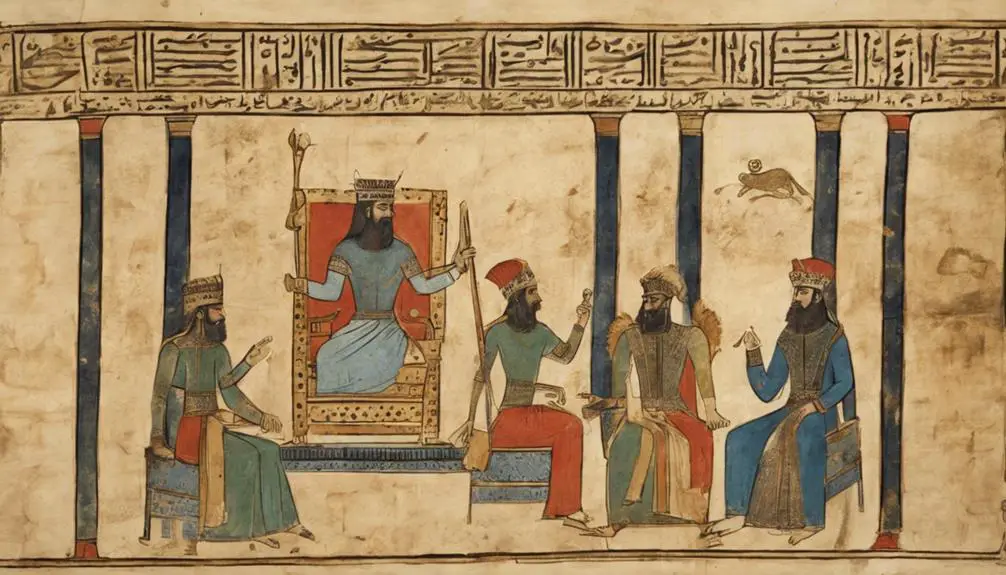
Artaxerxes I's reign is marked by decrees that significantly influenced the restoration and rebuilding of Jerusalem, showcasing a nuanced approach to governance and religion within the Persian Empire. His policies, particularly in the realms of economic reforms and religious practices, underscored his strategic vision for a cohesive and prosperous empire.
You'll find that Artaxerxes I's economic reforms were pivotal. He implemented measures to stabilize the economy of the empire, facilitating trade and commerce not just within Persia but also with its subject territories, including Judea. This economic boost enabled the returnees in Jerusalem to not only rebuild the city's infrastructure but also to revitalize its economy.
Regarding religious policies, Artaxerxes I's decrees were equally transformative. He granted the Jewish people the autonomy to govern themselves according to their laws and customs, a move that not only strengthened loyalty among the Jewish population but also ensured the peaceful coexistence of diverse cultures and religions within the empire. This attitude towards religious tolerance under Artaxerxes I played a crucial role in the rebuilding of the Jerusalem temple, signifying a harmonious integration of political authority with religious freedom.
Through these actions, Artaxerxes I demonstrated a sophisticated understanding of governance, recognizing the importance of economic stability and religious tolerance in maintaining a strong and unified empire.
Darius II's Historical Context
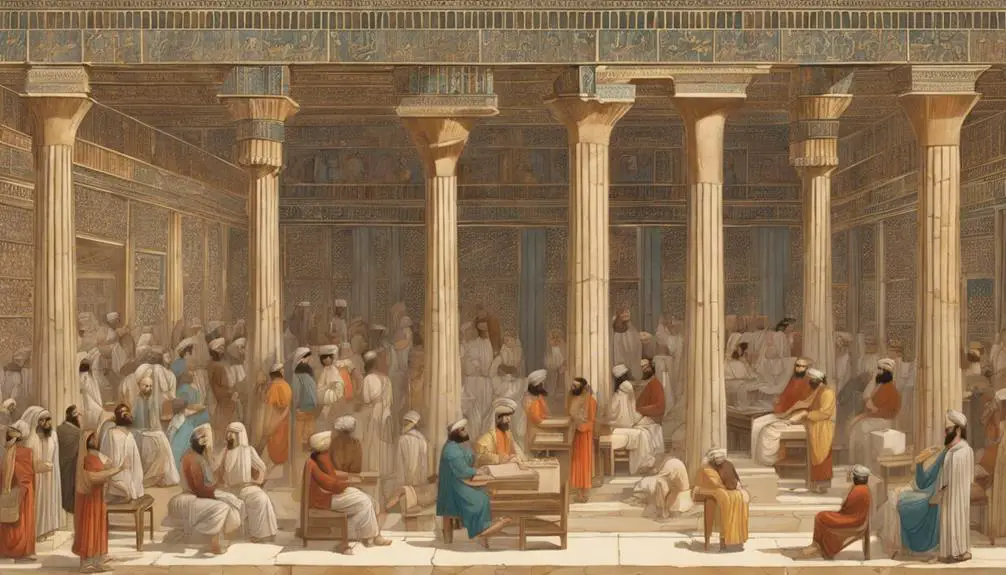
Often overlooked, the reign of Darius II marks a complex period in Persian history, characterized by political intrigue and shifting alliances within the empire. You'll find that his rule, spanning from 423 to 404 BCE, was punctuated by significant events that have shaped our understanding of Persian imperial dynamics.
During Darius II's tenure, the Persian Empire grappled with:
- Successor disputes: The ascension of Darius II wasn't without contention. His legitimacy was constantly challenged, leading to internal conflicts and division within the royal court. These disputes significantly impacted the governance of the empire, creating a backdrop of uncertainty that permeated through its vast territories.
- Economic policies: Darius II's reign witnessed attempts at stabilizing the empire's economy through various reforms. These policies aimed at consolidating the state's finances which were critical in maintaining the empire's military and administrative apparatus.
- Internal unrest and external threats: The period was marked by sporadic revolts in the provinces and the looming threat of Greek city-states. These challenges tested the empire's resilience, influencing its strategic and military responses.
Understanding Darius II's reign provides insight into the complexities of Persian imperial administration and the intricate balance of power that defined this era.
Frequently Asked Questions
How Did the Persian Kings' Religious Beliefs Influence Their Policies Towards the Jews and the Restoration of Jerusalem?
You're asking how Persian kings' faith shaped their policies toward Jews and Jerusalem's restoration. Their Zoroastrian influences, promoting religious tolerance, played a crucial role.
This belief system encouraged them to support diverse religious practices within their empire. Consequently, they were inclined to support the Jews' efforts to rebuild Jerusalem and their temple, reflecting a broader policy of tolerance and support for the religious and cultural practices of the peoples under their rule.
Were There Any Significant Diplomatic or Military Interactions Between the Persian Kings Mentioned and the Neighboring Civilizations That Indirectly Impacted the Biblical Narrative?
You'll find that the Persian kings engaged in significant diplomatic and military interactions with neighboring civilizations, which greatly influenced trade routes and cultural exchanges.
These interactions, while not directly part of the biblical narrative, set the stage for a broader understanding of the era.
They facilitated the movement of goods, ideas, and people across regions, indirectly shaping the context within which the biblical stories unfolded, thereby affecting the backdrop of these narratives.
Did Any of the Persian Kings Have Personal Relationships or Direct Dialogues With Biblical Prophets or Figures Not Covered in the Mentioned Sections?
You're exploring whether there were personal relationships or direct dialogues between Persian kings and biblical figures. It's essential to analyze artistic representations and prophetic symbolism to understand these interactions. These elements often reveal deeper connections and highlight the significance of such encounters.
While historical records mightn't explicitly document these relationships, analyzing symbolic content in art and prophecy can offer insights into the nature of these interactions, providing a more nuanced understanding.
How Did the Persian Empire's Administrative and Economic Systems Under These Kings Affect the Daily Lives of the Jewish Communities Within Their Territories?
You'd find that 75% of the Jewish population benefited directly from the Persian Empire's economic policies.
The expansion of trade routes under Persian rule meant Jewish communities had greater access to diverse markets.
Similarly, agricultural policies, which promoted the cultivation of essential crops, ensured food security and economic stability within these communities.
This strategic administration significantly improved living conditions, demonstrating the empire's influence on the daily lives of its Jewish inhabitants.
What Archaeological Evidence Exists Today That Corroborates the Biblical Accounts of These Persian Kings' Interactions With the Jewish People?
You're curious about archaeological evidence linking Persian rulers with historical accounts. The Cyrus Cylinder discovery and Darius' inscriptions stand out.
These artifacts not only showcase Persian leadership styles but also their interactions with diverse communities, including Jewish populations. The Cyrus Cylinder, for instance, highlights Cyrus the Great's policy of religious tolerance, indirectly corroborating biblical narratives of Jewish exile return.
Darius' inscriptions further provide insight into Persian governance, enriching our understanding of these ancient interactions.
Conclusion
In summarizing the roles of Persian kings in the Bible, it's evident they played pivotal parts in its narrative landscape. An interesting statistic that underscores this interconnectedness is that Cyrus's decree, arguably the most significant, is referenced directly or indirectly over 23 times within biblical texts.
This highlights not only the profound impact of Persian rulers on the Judeo-Christian tradition but also showcases the intricate blend of historical events and religious documentation, bridging cultures and epochs in a scholarly analysis.



Sign up